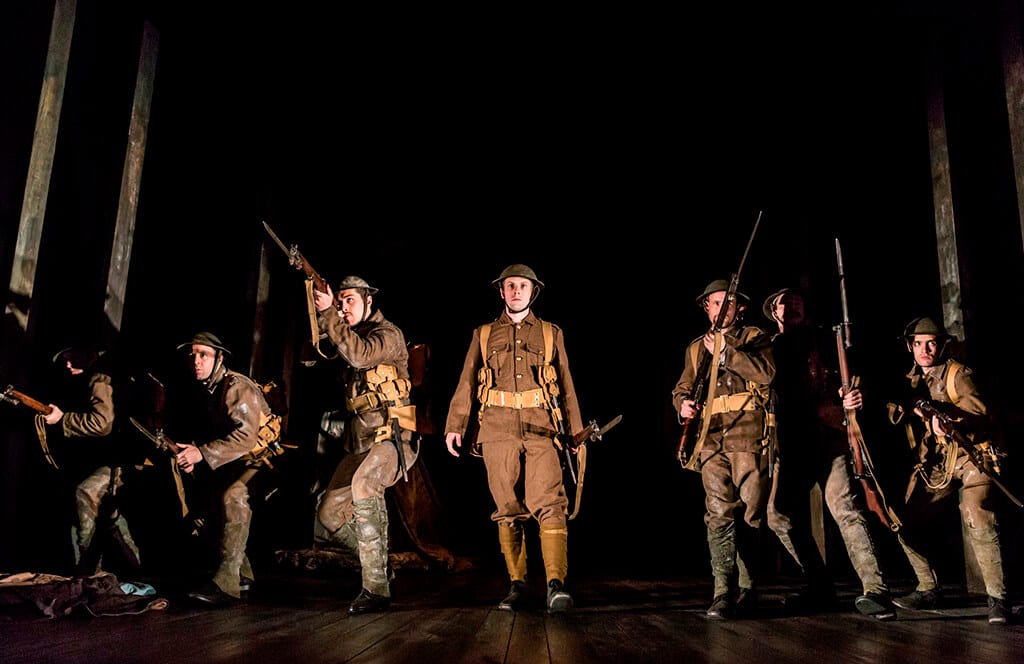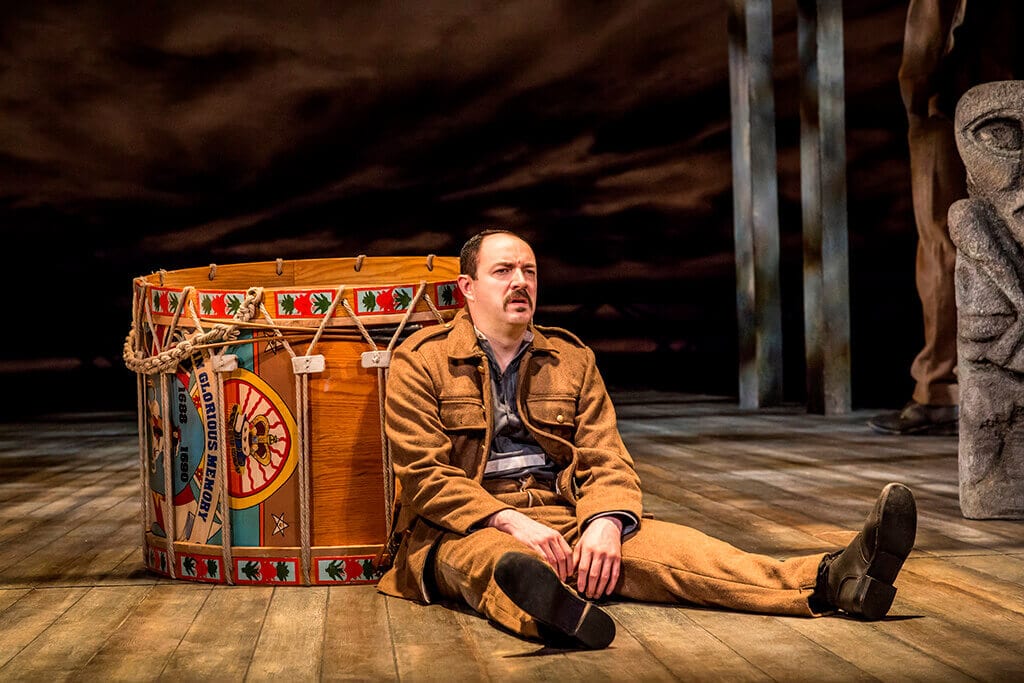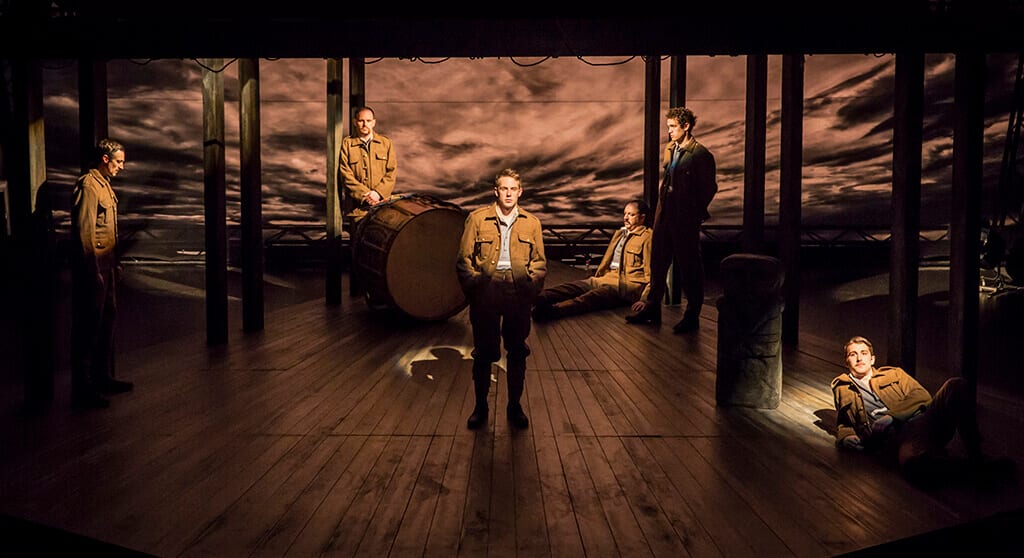What can a play about the fate of the Ulster division in the Battle of the Somme offer 21st century spectators? Premiered two months before the centenary of the bloodshed that raged from July to November 1916, Jeremy Herrin’s production of Frank McGuinness’s Observe the Sons of Ulster Marching Towards the Somme (1985) raises the question of the play’s relevance to a contemporary audience beyond timeliness.
The play opens as a ragged old man, Kenneth Pyper (Seán McGinley), a war survivor, is forced by a dream to stir the painful memories of his fallen comrades. There is a brief rant against the ‘Fenian cowards’ — but the old man quickly fades in the background and we find ourselves in 1914.
Eight soldiers, including Pyper‘s younger self (Donal Gallery), meet in an army barracks – two lines of vertical beams facing each other. Pyper’s riddles both annoy and puzzle his companions. In one of the second part’s humorous moments, naïve Moore (Chris McCurry) is completely taken in by Pyper’s fanciful (and bloody) telling of his encounter with a three-legged French whore. Gallery’s Pyper quickly imposes himself as the audience’s darling: he invariably gets most of the laughs. His shared scene with Craig (Ryan Donadlson), a young blacksmith who offers Pyper his handkerchief to bandage his hand, gives some added depth to the soldiers’ banter. Amid the shows of laddishness and virility imposed by military society, this gesture to the bonds created between soldiers foreshadows one of the threads running through the play, as friendly and amorous pairs form between the soldiers.
Later, back in Ulster, the temporary leave from the strain of war gives each duo of actors the time to express their respective anxieties about the outcome of war, in a successfully orchestrated chorus, revealing the characters’ despair and their clinging to political or religious allegiances.
The lighting, an impressionistic succession of colours and shadows from the grey skies of Ireland to the pink, red and purple of the Somme, works to fruitful effect, leading up to the final assault. The play’s symmetrical set gives a spectacular touch to the whole, with the stage’s sloping perspective rising up towards the horizon, or down towards an imagined no-man’s land, arranging the soldiers in successive tableaus that occasionally prove a bit static.
Bringing the slaughter on stage is besides the point of Observe the Sons: the play emphasises the leisurely moments of war, showing soldiers in the off hours. Consequently, perhaps, a lot seems to be left half-asserted or alluded to in passing, be it in the play’s opening scene, set at the time of the Irish civil war, or in the playful enacting of the Battle of the Boyne. At times slightly offbeat, this production of Observe the Sons benefits from its casting and aesthetic choices, and will certainly prove a treat to history lovers.




